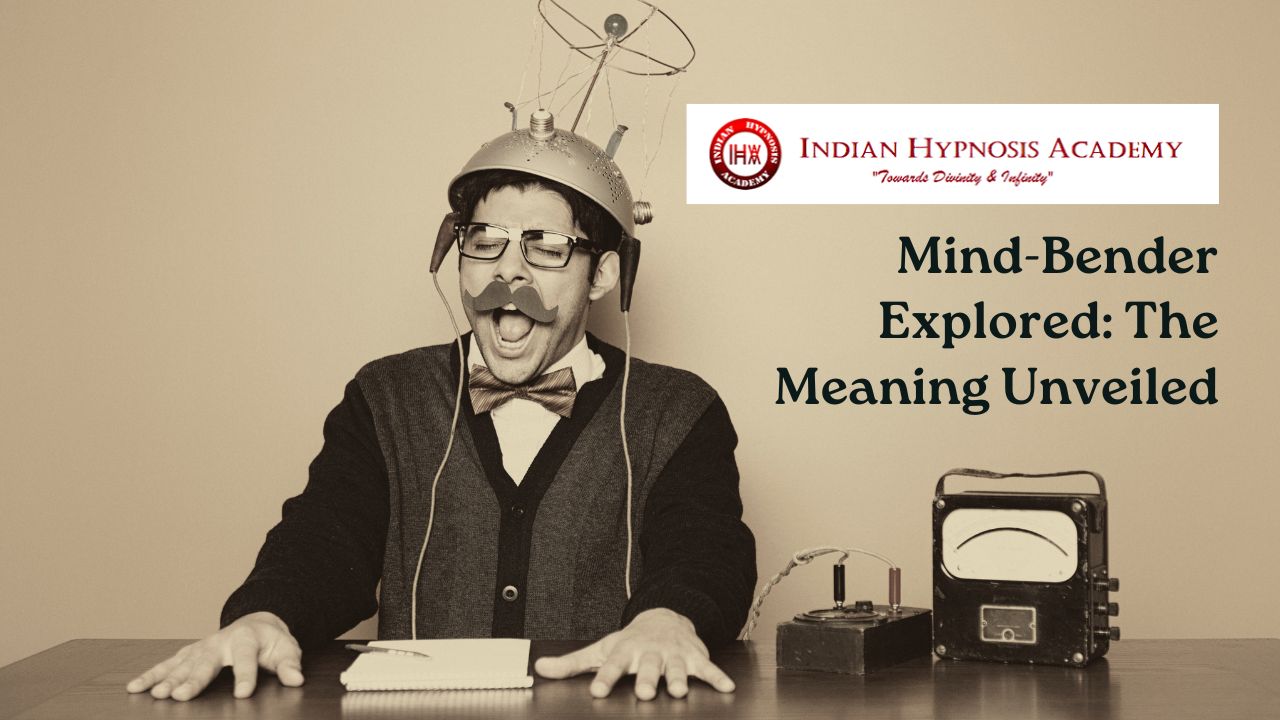Introduction to Mind-Bender
Step into a world where reality bends and perceptions shatter. Welcome to the mind-bending realm, where nothing is as it seems and curiosity fuels our quest for answers. From optical illusions that challenge our visual understanding to perplexing puzzles that push the boundaries of logic, mind-bending activities have captivated us for centuries. In this blog post, we will unveil the meaning behind these enigmatic experiences, exploring their history, science, benefits, controversies, and ultimately embracing the mystery that lies within. So get ready to expand your mind and embark on a journey through the fascinating world of mind-benders!
The History and Evolution of Mind-Bending Activities
Throughout history, humans have been fascinated by activities that challenge the mind and push the boundaries of our perception. From ancient riddles to modern optical illusions, mind-bending experiences have captivated people from all walks of life.
In ancient times, puzzles and brainteasers were used as a form of entertainment and mental exercise. The Egyptians created intricate hieroglyphic puzzles, while the Greeks devised complex mathematical problems. These early forms of mind-bending activities laid the foundation for what would later become popular brain teasers.
As civilizations advanced, so did the complexity of mind-bending activities. In medieval Europe, challenges like chess emerged as popular pastimes that required strategic thinking and problem-solving skills. Later on, in the 19th century, mechanical puzzles gained popularity with inventions such as Rubik’s Cube captivating millions around the world.
With the advent of technology came new possibilities for mind-bending experiences. Virtual reality games now immerse players in fantastical worlds where their senses are deceived and their minds challenged. Augmented reality apps allow users to interact with virtual objects in their physical environment, blurring the lines between what is real and what is not.
Today, we live in an age where there is no shortage of mind-bending activities to choose from. Escape rooms test our ability to think critically under pressure while solving intricate puzzles within a limited time frame. Optical illusions continue to bewilder us with their ability to trick our brains into seeing things that aren’t really there.
The evolution of these mind-benders has shown how they adapt to society’s changing preferences while still maintaining their core purpose – stimulating our minds and pushing us beyond our comfort zones. Whether it’s through traditional brain teasers or cutting-edge technological innovations, these activities remain timeless sources of entertainment and mental stimulation.
So next time you find yourself drawn towards a challenging puzzle or mesmerized by an illusion that defies logic, remember that you are participating in a long and rich history of mind-bending activities that have fascinated humans for centuries.
The Science Behind Mind-Bending Experiences
Have you ever wondered why certain activities or experiences have the power to bend our minds? It turns out that there is a scientific explanation behind these mind-bending phenomena. When we engage in mind-bending activities, our brains are stimulated in unique ways that challenge our perception and understanding of reality.
One key aspect of mind-bending experiences lies in how they activate different parts of the brain simultaneously. For example, optical illusions play tricks on our visual system by presenting conflicting information to our eyes, forcing various regions of the brain to process and interpret what we see. This creates a cognitive dissonance that can leave us questioning what is real.
Another factor is the role of expectation and belief. Our brains rely heavily on patterns and expectations to make sense of the world around us. Mind-benders often exploit this by defying or manipulating these expectations, causing confusion and surprise. This disrupts our usual mental processes and forces us to question our assumptions.
Furthermore, neuroscience research suggests that mind-bending experiences can alter the balance between different neural networks in the brain. These alterations can lead to enhanced creativity and problem-solving abilities as well as increased neuroplasticity – the brain’s ability to adapt and change.
In addition, engaging in mind-bending activities stimulates dopamine release in the brain’s reward pathway. This neurotransmitter plays a crucial role in motivation, pleasure, and learning. The surge of dopamine during mind-benders contributes to feelings of excitement and enjoyment while also reinforcing neural connections associated with these experiences.
Delving into mind-bending activities provides not only entertainment but also valuable insights into how our brains perceive reality. By challenging our preconceived notions and pushing cognitive boundaries, we expand our understanding of ourselves and strengthen important neural connections within our brains.
Popular Examples of Mind-Bending Activities
- Optical illusions: From the famous spinning dancer to the mind-boggling “impossible” figures, optical illusions never fail to leave us questioning our perception of reality. These visual puzzles play tricks on our minds, making objects appear differently than they actually are.
- Escape rooms: Imagine being locked in a room with a group of friends and having to solve puzzles and riddles within a set time limit to escape. This immersive experience challenges your problem-solving skills, teamwork abilities, and ability to think outside the box.
- Rubik’s Cube: This iconic puzzle has been twisting brains since its invention in 1974. Trying to align all the colors on each side can be frustratingly complex but immensely satisfying when you finally crack it.
- Virtual reality games: With advances in technology, virtual reality (VR) allows us to step into vividly realistic digital worlds where our senses are tricked into believing we’re somewhere else entirely. VR games provide an immersive and mind-bending experience like no other.
- Magic tricks: Magicians have been captivating audiences for centuries by manipulating their perception through sleight of hand and misdirection techniques that challenge our understanding of what is possible.
Each of these examples offers a unique form of mind-bending entertainment that pushes the boundaries of our perceptions and cognitive abilities.
How Mind-Bending Can Benefit the Brain
The human brain is a complex and fascinating organ, constantly seeking new challenges and stimulation. Engaging in mind-bending activities can provide just that – a mental workout that can benefit the brain in numerous ways.
One of the key benefits of mind-bending experiences is improved cognitive function. When we engage in activities that challenge our thinking, such as puzzles or riddles, we stimulate various regions of the brain responsible for problem-solving and critical thinking. This can lead to enhanced memory, concentration, and overall mental agility.
Furthermore, participating in mind-bending activities has been shown to increase creativity. By pushing ourselves outside of our comfort zones and exploring unfamiliar concepts or perspectives, we stimulate our imagination and open up new pathways for innovative thinking.
In addition to these cognitive benefits, mind-bending experiences also have positive effects on emotional well-being. Solving challenging problems or unraveling mysteries can create a sense of accomplishment and boost self-confidence. It can also serve as a form of relaxation by providing an escape from everyday stressors.
Moreover, engaging in mind-benders encourages continuous learning. As we tackle new puzzles or explore different types of mind games, we expand our knowledge base across various subjects. This constant intellectual growth not only keeps the brain active but also fosters curiosity and a thirst for knowledge.
Incorporating mind-bending activities into your routine can be highly beneficial for the brain’s health and functioning. So why not embark on this adventurous journey full of enigmas waiting to be solved? Let your curiosity guide you as you explore the unknown depths of your own mind!
Controversies Surrounding Mind-Bender
Mind-bending activities have captivated individuals for centuries, but not without stirring up some controversies along the way. One of the main concerns surrounding these experiences is their potential impact on mental health. Some argue that engaging in mind-bending activities may lead to confusion, anxiety, or even psychosis in vulnerable individuals.
Another controversy revolves around the notion of control. Critics argue that mind-benders exploit psychological techniques to manipulate and deceive participants for their own gain. This raises ethical questions about consent and autonomy.
Additionally, there are debates regarding the validity of mind-bending experiences themselves. Skeptics question whether these activities truly tap into higher consciousness or if they are merely illusions created by our own minds.
Furthermore, there is a concern about addiction to mind-bending activities. Just like any other form of entertainment or self-exploration, excessive engagement can potentially lead to dependency and neglect of other important aspects of life.
Some believe that certain mind-bending practices cross cultural boundaries and appropriate sacred traditions without proper understanding or respect.
While controversies persist around mind-benders, it’s important to approach them with an open and critical mindset. Exploring different viewpoints allows us to better understand both the potential benefits and risks associated with these intriguing experiences.
Conclusion: Embracing the Mystery of Mind-Bending
In this exploration of mind-bending activities, we have delved into their history, evolution, scientific aspects, popular examples, and even the controversies surrounding them. It is evident that mind-bending experiences hold a unique fascination for individuals across cultures and time.
While we may strive to understand the meaning behind these activities, it is important to remember that part of their allure lies in their enigmatic nature. Mind-benders challenge our perception of reality and push us to think beyond conventional boundaries.
Rather than seeking definitive answers or explanations for everything related to mind-bending, perhaps it is more fulfilling to embrace the mystery they present. Engaging in these activities can spark curiosity, creativity, and critical thinking skills. They provide an opportunity to explore new perspectives and expand our understanding of ourselves and the world around us.
So let us celebrate the wonderment that arises from experiencing mind-benders. Let’s marvel at how they continue to evolve through time while captivating minds young and old alike. Whether it be optical illusions, complex puzzles or immersive virtual reality experiences – let’s appreciate them as gateways into extraordinary realms where imagination knows no bounds.
As we embark on this journey of unraveling the meaning behind mind-benders, let us not forget that sometimes it is in embracing the unknown that we truly discover something remarkable about ourselves.



